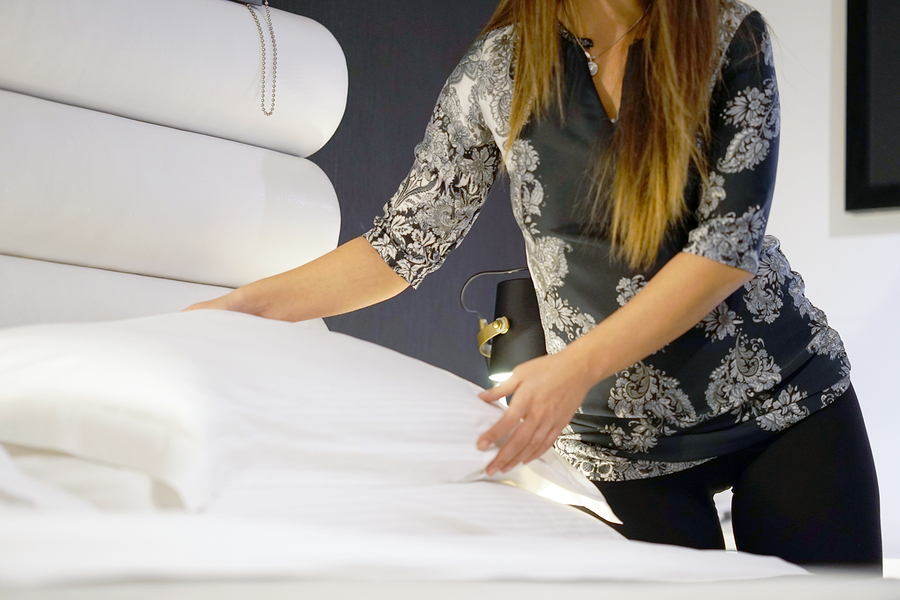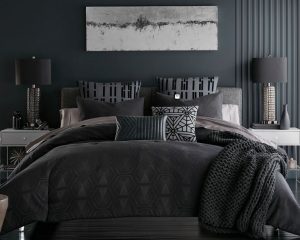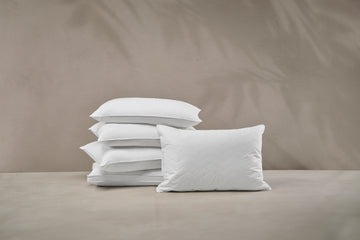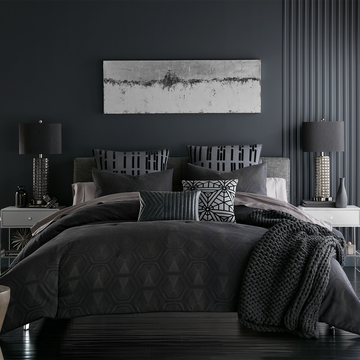Our Guide to Hotel Linen Product Terms
Jul 13, 2024
At Sobel Westex, textiles are both our craft and our passion. For decades, we have supplied luxury linens to hotels and resorts around the world, creating pieces where comfort, durability, and beauty come together. Our global design and production teams ensure every product meets the highest hospitality standards while offering a range of styles and price points for every preference.
Each item in our collection, from plush hotel pillows to soft cotton towels, reflects our commitment to three key values: comfort, beauty, and durability. We believe that choosing the right linens starts with understanding what makes them exceptional.
That is why we provide complete transparency about our materials, including fiber types, weaves, thread counts, finishes, and care instructions. Whether you are a hospitality professional or a Sobel at Home customer, our goal is to help you make informed choices about what you bring into your space.
The textile world has its own language. To help you get familiar with the terms you will see throughout our product descriptions, we have created this clear and practical guide to hotel linen terminology.
Glossary Index:
- Cambric Weave
- Denier Measurement
- Dobby Fabric Benefits
- Fiberfill and Flange
- French Fold Construction
- GSM Fabric Weight
- Gusset Structure
- Herringbone Weave
- Jacquard Designs
- Matelassé Texture
- Microfiber Material
- OEKO-TEX Certification
- Percale Weave
- Pilling Information
- Polyfill Comfort
- Ring-Spun Cotton
- Sateen Weave
- Thread Count Guide
- Ticking Fabric
Terms You May See in our Quality Linen Product Descriptions
 Why is Cambric weave popular for hotel linens?
Why is Cambric weave popular for hotel linens?
Cambric fabric is dense and strong, making it ideal for use in hotel linens such as bedding and towels. It is often calendared, that is, passed through calendar rollers at high pressure and temperature to give it a smooth, flat surface. The warp and weft weave, where threads alternate over each other, means the color will be the same on both sides of the fabric.
What is Denier and how is it used to measure the density of fabric?
This is a measure of the density of the fabric, which is especially important when it comes to hotel linens. This is a measure of the density of the fabric. It is based on the length of a single strand of silk, about 9000 meters that weigh about one gram. Low-denier fabric will be silky and sheer. Higher denier fabric is thick and durable. A fabric with a width of less than one is known as a microfiber. For comparison, a strand of human hair is about 20 denier.
Dobby Fabric and its Benefits
Dobby fabric is produced on a dobby loom. The fabric usually has a textured feel with a repeated, small geometric pattern woven in. A dobby design enhances the beauty of a product, such as the textured dobby stripes on our Raiya Turkish towel collection.
How does Fiberfill enhance the comfort and structure of bedding?
Fiberfill consists of polyester or polyester blend fibers that are combed and fluffed to mimic cotton’s loft. It adds softness, structure, and comfort to pillows, comforters, and mattress pads.
What is a Flange and how does it elevate the look of hotel bedding?
A flange is a decorative border sewn around the edges of shams, duvets, and comforters. It creates a clean, tailored finish that enhances the visual appeal of bedding.
How does a French Fold keep hotel pillowcases neatly secured?
A French fold uses an inner flap of fabric to hold the pillow securely in place. This construction keeps the case smooth and fitted without buttons or zippers, making it a popular choice for hotel pillowcases.
What does GSM measure and why does fabric weight matter?
GSM stands for Grams per Square Meter. It measures fabric density and helps determine how light, medium, or heavy a textile feels.
Lightweight: under 150 GSM
Medium weight: 150 to 350 GSM
Heavyweight: above 350 GSM
Thicker fabrics, such as Turkish towels
at 600 GSM, offer greater absorbency and plushness.
How does a Gusset improve the shape and durability of pillows?
A gusset is an added fabric panel that increases structure and volume. It helps pillows maintain their shape, provides better edge support, and gives bedding items a more tailored appearance.
What makes the Herringbone weave a classic choice for linens?
The herringbone pattern is made from alternating diagonal twill lines that form a V shape. This weave is known for durability and a timeless, tailored look, commonly used in cotton and wool textiles.
How does Jacquard weaving create intricate patterns in bedding?
Jacquard weaving embeds detailed designs directly into the fabric instead of printing them on top. This creates dimensional texture and adds refined style to bedding such as Jacquard sheet sets and coverlets.
What is Matelassé and why does it resemble quilted fabric?
Matelassé is a thick, textured weave created to mimic the look of quilting. It provides depth, softness, and structure, often used in coverlets, shams, and decorative bedding layers.
Why is Microfiber used in soft and lightweight hotel bedding?
Microfiber is made from ultra-fine synthetic fibers, usually polyester. It is lightweight, breathable, hypoallergenic, and easy to care for. Brushed microfiber offers a warm, velvety texture.
What does OEKO-TEX certification ensure in textile safety?
OEKO-TEX certification verifies that a textile has been tested for substances harmful to human health. All Sobel Westex linens meet this standard, ensuring safe, responsible materials for the home.
Why is Percale a popular weave for crisp, breathable sheets?
Percale uses a tight one-over-one weave that creates a smooth, crisp, matte finish. It is breathable, durable, and commonly chosen for hotel-quality percale sheets.
What causes Pilling and how can high-quality fibers prevent it?
Pilling occurs when loose or short fibers form small balls on the surface of the fabric. Long-staple cottons such as Egyptian, Pima, and Turkish cotton naturally resist pilling, and gentle laundering helps maintain fiber quality.
How does Polyfill mimic the comfort of natural down?
Polyfill is a synthetic fiber designed to imitate the loft and softness of down. It is lightweight, hypoallergenic, mildew resistant, and commonly used in comforters and luxury hotel pillows.
Why is Ring-Spun cotton valued for softness and durability?
Ring-spun cotton is created by twisting and thinning long cotton fibers into a smooth, strong yarn. This process results in stronger, softer, and more durable fabric ideal for bedding and towels.
What makes the Sateen weave feel smooth and luxurious?
Sateen uses a weaving technique that brings more surface threads to the top, creating a silky, lustrous finish. It offers warmth, softness, and a smooth hand feel, making sateen bedding a popular choice for luxury sheets.
How does Thread Count influence the feel and durability of sheets?
Thread count measures the number of threads woven into one square inch of fabric. The best balance of softness and durability is often found between 300 and 600 thread count, depending on fiber quality and weave.
What is Ticking fabric and how is it used to protect bedding?
Ticking is a tightly woven cotton or linen fabric used to cover pillows, mattresses, and cushions. It serves as a protective layer that enhances durability and comfort.
Get to Know Sobel at Home’s Luxury Hotel Linens
 Sobel Westex has supplied luxury linens to world-class hotels for decades. Through Sobel at Home, you can bring these same materials, finishes, and performance standards into your home. Explore our selection of pillows, sheets, bath sets, and blankets and throws, all crafted with care and premium fibers.
Sobel Westex has supplied luxury linens to world-class hotels for decades. Through Sobel at Home, you can bring these same materials, finishes, and performance standards into your home. Explore our selection of pillows, sheets, bath sets, and blankets and throws, all crafted with care and premium fibers.
Our themed collections, including Star Wars Home Collection and Disney Resorts Home Collection combine distinctive design with hotel-quality construction. Bring the comfort of fine hotel living into your home with Sobel Westex.




3 comments
Look for the pillows from Hard Rock in Bristol.
Great guide! This really helps in choosing the perfect Hotel Bedsheets for comfort and durability. Very informative!
What pillows do they use in the East tower at Hard Rock hotel in Tampa? I would like to purchase them. Thanks